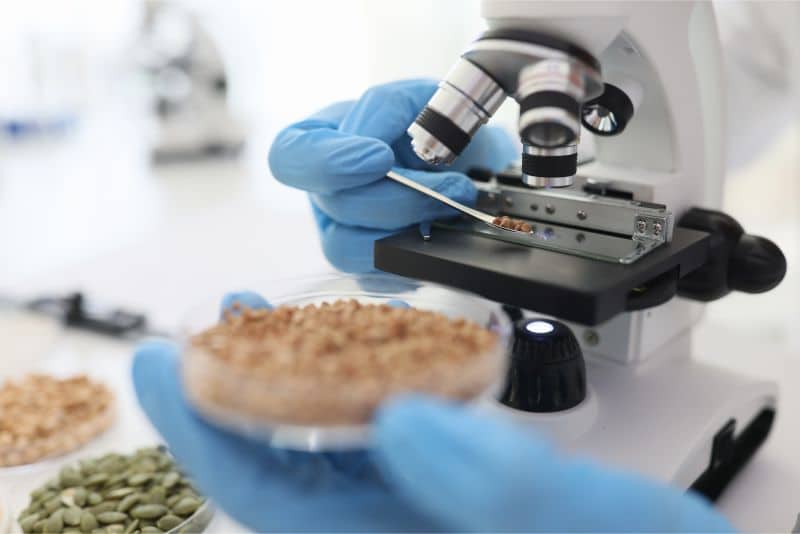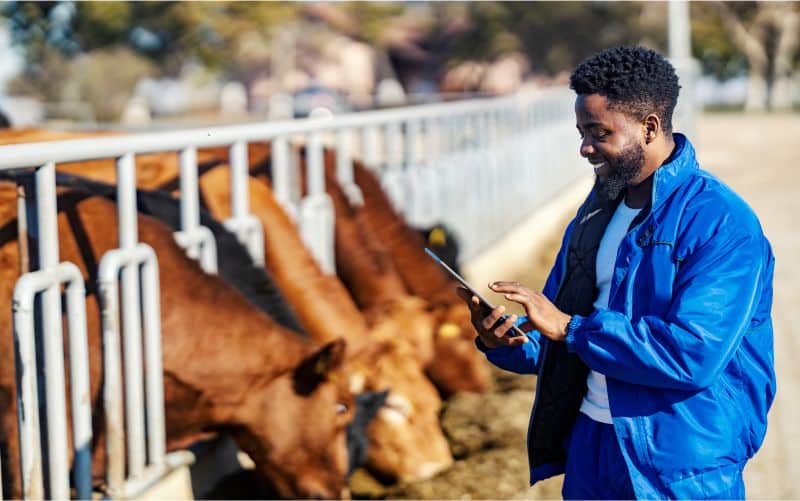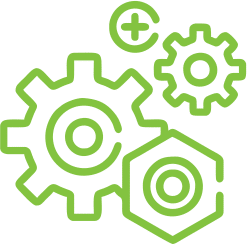Wet Chemistry Testing for Animal Feed
Wet Chemistry Testing for Animal Feed
Wet chemistry is the reference standard laboratory method for analysing animal feed quality.
Using precise chemical reactions in liquid solutions, this proven technique accurately measures the nutritional components that matter most – delivering reliable, repeatable results you can trust for feed safety, consistency, and compliance.

Wet chemistry is the reference standard laboratory method for analysing animal feed quality.
Using precise chemical reactions in liquid solutions, this proven technique accurately measures the nutritional components that matter most – delivering reliable, repeatable results you can trust for feed safety, consistency, and compliance.

Why Wet Chemistry Matters in Animal Feed
Animal feed quality directly impacts animal health, productivity, and the safety of the food chain. Wet chemistry testing is essential for:
- Nutritional profiling – accurately determining protein, fat, fibre, ash, and moisture levels
- Mineral analysis – measuring critical minerals including sodium, calcium, and phosphorus
- Quality assurance – confirming that feed formulations meet industry and regulatory standards
- Complete feed safety – when combined with our mycotoxin screening, providing comprehensive contamination monitoring
By precisely measuring these parameters, wet chemistry testing supports optimal growth, reproduction, and performance in livestock, while helping protect the entire food chain from farm to fork.
Wet Chemistry vs. NIR Analysis
Feed producers sometimes use near-infrared spectroscopy (NIR) as a faster, lower-cost method for estimating nutritional content. NIR relies on light absorption patterns and predictive models, making it suitable for quick, high-throughput screening. However, it has important limitations:
- Accuracy depends heavily on calibration against known reference samples
- Novel or complex feed ingredients can reduce reliability
- Regulatory bodies generally require reference methods for compliance
Wet chemistry is the gold standard because it directly measures nutrient content through chemical reactions rather than predictions. While it requires more time than NIR, it delivers:
- Unmatched accuracy and reproducibility across diverse feed types
- Reference-grade results that validate NIR calibrations
- Regulatory compliance confidence where precision is non-negotiable
- Reliable analysis of new or unusual feed ingredients
The bottom line: NIR is valuable for rapid screening, but wet chemistry is indispensable when accuracy and compliance matter most.
Wet Chemistry vs. NIR Analysis
Feed producers sometimes use near-infrared spectroscopy (NIR) as a faster, lower-cost method for estimating nutritional content. NIR relies on light absorption patterns and predictive models, making it suitable for quick, high-throughput screening. However, it has important limitations:
- Accuracy depends heavily on calibration against known reference samples
- Novel or complex feed ingredients can reduce reliability
- Regulatory bodies generally require reference methods for compliance
Wet chemistry is the gold standard because it directly measures nutrient content through chemical reactions rather than predictions. While it requires more time than NIR, it delivers:
- Unmatched accuracy and reproducibility across diverse feed types
- Reference-grade results that validate NIR calibrations
- Regulatory compliance confidence where precision is non-negotiable
- Reliable analysis of new or unusual feed ingredients
The bottom line: NIR is valuable for rapid screening, but wet chemistry is indispensable when accuracy and compliance matter most.
AssureCloud’s Wet Chemistry Capabilities
At AssureCloud, we provide ISO 17025 accredited wet chemistry testing with comprehensive coverage of feed quality markers, including:
- Protein
- Total fat
- Crude fibre
- Ash
- Moisture
- Sodium
- Calcium
- Phosphorus
We integrate our wet chemistry testing with advanced mycotoxin screening for aflatoxins, ochratoxins, fumonisins, DON, T-2/HT-2, and zearalenone – providing complete feed safety assessment.

Why Choose AssureCloud?

Accredited expertise
ISO 17025 accredited (SANAS/SADCAS) ensuring internationally recognised testing standards

Regional reach
laboratories in South Africa and Zambia providing fast turnaround times across Southern Africa

Integrated services
wet chemistry, microbiology, PCR, ELISA, and water testing for complete feed and animal health monitoring

Trusted by industry
supporting feed mills, farmers, and food producers with international feed safety compliance
Why Choose AssureCloud?

Accredited expertise
ISO 17025 accredited (SANAS/SADCAS) ensuring internationally recognised testing standards

Regional reach
laboratories in South Africa and Zambia providing fast turnaround times across Southern Africa

Integrated services
wet chemistry, microbiology, PCR, ELISA, and water testing for complete feed and animal health monitoring

Trusted by industry
supporting feed mills, farmers, and food producers with international feed safety compliance
Partner with AssureCloud for Reliable Wet Chemistry Testing
With over 20 years of experience in food and animal feed testing, AssureCloud delivers the precision and compliance confidence your operation demands.
Ready to elevate your feed quality assurance?
Contact us today to discuss your testing requirements and discover how our ISO 17025 accredited wet chemistry services can support your success.